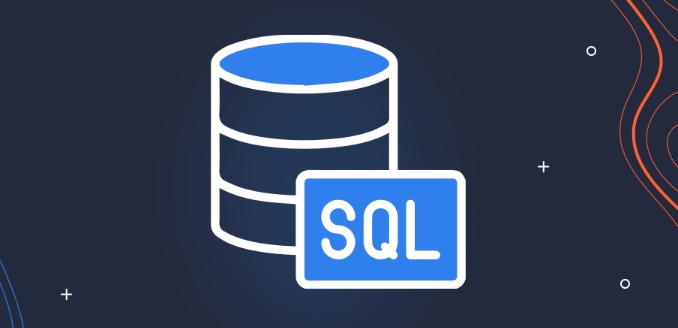Change Tracking is suitable for detecting whether data changes, does not record specific changes, and is small overhead, and is suitable for scenarios where large-scale tables are frequently updated; Change Data Capture records complete changes details, including old and new values, and is suitable for auditing, ETL incremental loading and other scenarios, but has a large performance overhead. Choose the two according to your needs: if you only need to synchronize the status, use Change Tracking; if you need to change the content, use Change Data Capture; it can also be used in combination.

There are two functions in SQL Server, Change Tracking and Change Data Capture. They sound a bit similar, but the usage and applicable scenarios are quite different. Simply put, Change Tracking is lighter and suitable for only caring about whether there is any change; while Change Data Capture is more detailed and can record how it changes.

Change Tracking: Suitable for lightweight change detection
If you just want to know if a piece of data has been modified and don't care about how it changes, then Change Tracking is suitable.
- It does not record old and new values, it only tells you which rows have changed.
- The overhead is small and has little impact on performance. It is suitable for large-scale tables or frequent updates.
- It is often used to synchronize data state between systems, such as whether the client cache needs to be refreshed.
For example: You have an order table that is updated many times a day, but you only need to know which orders have changed, and you don’t need to know which field has been changed. At this time, it’s just right to use Change Tracking.

The way to enable it is also relatively simple:
- Enable Change Tracking for the database
- Then enable the specific table and set retention time and other parameters
The disadvantage is that the information is limited, the historical data cannot be restored, and the audit operation cannot be performed.

Change Data Capture: Record complete changes
If you need to know when a certain line has been changed, including old and new values, you need to use Change Data Capture (CDC) .
- The CDC records the specific content of all insert, update and delete operations.
- Data is automatically crawled through the SQL Server Agent Job and saved to a special change table.
- Supports advanced uses such as data auditing and incremental loading in the ETL process.
For example, if you are working in a data warehouse and want to only process newly added or modified data at a time, CDC is particularly useful. It can tell you that a field has changed from "completed" to "cancel", rather than just telling you that the line has changed.
But CDC costs more:
- Need to enable SQL Server Agent
- Take up more disk space
- Have a certain impact on performance, especially for write-intensive applications
Therefore, not every table is suitable for opening CDC, and it is recommended to enable only critical business tables.
How to choose? Depend on your needs
Which one to use depends mainly on the problem you want to solve:
- If you're just doing sync or refreshing the cache, Change Tracking is enough.
- If you need to know what has been changed, such as reporting analysis, data migration, and audit trail, then choose Change Data Capture .
In addition, it can also be used in combination. For example, use Change Tracking for most tables, and only enable CDC for a few key tables.
In general, these two functions have their own positioning. Change Tracking is simple and efficient, and Change Data Capture is powerful but more complex. Only by selecting the appropriate mechanism based on the actual scenario can we not only meet business needs without dragging down system performance.
Basically that's it.
The above is the detailed content of SQL Server Change Tracking vs. Change Data Capture. For more information, please follow other related articles on the PHP Chinese website!

Hot AI Tools

Undress AI Tool
Undress images for free

Undresser.AI Undress
AI-powered app for creating realistic nude photos

AI Clothes Remover
Online AI tool for removing clothes from photos.

Clothoff.io
AI clothes remover

Video Face Swap
Swap faces in any video effortlessly with our completely free AI face swap tool!

Hot Article

Hot Tools

Notepad++7.3.1
Easy-to-use and free code editor

SublimeText3 Chinese version
Chinese version, very easy to use

Zend Studio 13.0.1
Powerful PHP integrated development environment

Dreamweaver CS6
Visual web development tools

SublimeText3 Mac version
God-level code editing software (SublimeText3)

Hot Topics
 Defining Database Schemas with SQL CREATE TABLE Statements
Jul 05, 2025 am 01:55 AM
Defining Database Schemas with SQL CREATE TABLE Statements
Jul 05, 2025 am 01:55 AM
In database design, use the CREATETABLE statement to define table structures and constraints to ensure data integrity. 1. Each table needs to specify the field, data type and primary key, such as user_idINTPRIMARYKEY; 2. Add NOTNULL, UNIQUE, DEFAULT and other constraints to improve data consistency, such as emailVARCHAR(255)NOTNULLUNIQUE; 3. Use FOREIGNKEY to establish the relationship between tables, such as orders table references the primary key of the users table through user_id.
 What is the difference between WHERE and HAVING clauses in SQL?
Jul 03, 2025 am 01:58 AM
What is the difference between WHERE and HAVING clauses in SQL?
Jul 03, 2025 am 01:58 AM
The main difference between WHERE and HAVING is the filtering timing: 1. WHERE filters rows before grouping, acting on the original data, and cannot use the aggregate function; 2. HAVING filters the results after grouping, and acting on the aggregated data, and can use the aggregate function. For example, when using WHERE to screen high-paying employees in the query, then group statistics, and then use HAVING to screen departments with an average salary of more than 60,000, the order of the two cannot be changed. WHERE always executes first to ensure that only rows that meet the conditions participate in the grouping, and HAVING further filters the final output based on the grouping results.
 Key Differences Between SQL Functions and Stored Procedures.
Jul 05, 2025 am 01:38 AM
Key Differences Between SQL Functions and Stored Procedures.
Jul 05, 2025 am 01:38 AM
SQLfunctionsandstoredproceduresdifferinpurpose,returnbehavior,callingcontext,andsecurity.1.Functionsreturnasinglevalueortableandareusedforcomputationswithinqueries,whileproceduresperformcomplexoperationsanddatamodifications.2.Functionsmustreturnavalu
 Can You Provide Code Examples Demonstrating Pattern Matching in SQL?
Jul 04, 2025 am 02:51 AM
Can You Provide Code Examples Demonstrating Pattern Matching in SQL?
Jul 04, 2025 am 02:51 AM
Pattern matching functions in SQL include LIKE operator and REGEXP regular expression matching. 1. The LIKE operator uses wildcards '%' and '_' to perform pattern matching at basic and specific locations. 2.REGEXP is used for more complex string matching, such as the extraction of email formats and log error messages. Pattern matching is very useful in data analysis and processing, but attention should be paid to query performance issues.
 Using SQL LAG and LEAD functions for time-series analysis.
Jul 05, 2025 am 01:34 AM
Using SQL LAG and LEAD functions for time-series analysis.
Jul 05, 2025 am 01:34 AM
LAG and LEAD in SQL are window functions used to compare the current row with the previous row data. 1. LAG (column, offset, default) is used to obtain the data of the offset line before the current line. The default value is 1. If there is no previous line, the default is returned; 2. LEAD (column, offset, default) is used to obtain the subsequent line. They are often used in time series analysis, such as calculating sales changes, user behavior intervals, etc. For example, obtain the sales of the previous day through LAG (sales, 1, 0) and calculate the difference and growth rate; obtain the next visit time through LEAD (visit_date) and calculate the number of days between them in combination with DATEDIFF;
 How to find columns with a specific name in a SQL database?
Jul 07, 2025 am 02:08 AM
How to find columns with a specific name in a SQL database?
Jul 07, 2025 am 02:08 AM
To find columns with specific names in SQL databases, it can be achieved through system information schema or the database comes with its own metadata table. 1. Use INFORMATION_SCHEMA.COLUMNS query is suitable for most SQL databases, such as MySQL, PostgreSQL and SQLServer, and matches through SELECTTABLE_NAME, COLUMN_NAME and combined with WHERECOLUMN_NAMELIKE or =; 2. Specific databases can query system tables or views, such as SQLServer uses sys.columns to combine sys.tables for JOIN query, PostgreSQL can be used through inf
 How to create a user and grant permissions in SQL
Jul 05, 2025 am 01:51 AM
How to create a user and grant permissions in SQL
Jul 05, 2025 am 01:51 AM
Create a user using the CREATEUSER command, for example, MySQL: CREATEUSER'new_user'@'host'IDENTIFIEDBY'password'; PostgreSQL: CREATEUSERnew_userWITHPASSWORD'password'; 2. Grant permission to use the GRANT command, such as GRANTSELECTONdatabase_name.TO'new_user'@'host'; 3. Revoke permission to use the REVOKE command, such as REVOKEDELETEONdatabase_name.FROM'new_user
 How to backup and restore a SQL database
Jul 06, 2025 am 01:04 AM
How to backup and restore a SQL database
Jul 06, 2025 am 01:04 AM
Backing up and restoring SQL databases is a key operation to prevent data loss and system failure. 1. Use SSMS to visually back up the database, select complete and differential backup types and set a secure path; 2. Use T-SQL commands to achieve flexible backups, supporting automation and remote execution; 3. Recovering the database can be completed through SSMS or RESTOREDATABASE commands, and use WITHREPLACE and SINGLE_USER modes if necessary; 4. Pay attention to permission configuration, path access, avoid overwriting the production environment and verifying backup integrity. Mastering these methods can effectively ensure data security and business continuity.






